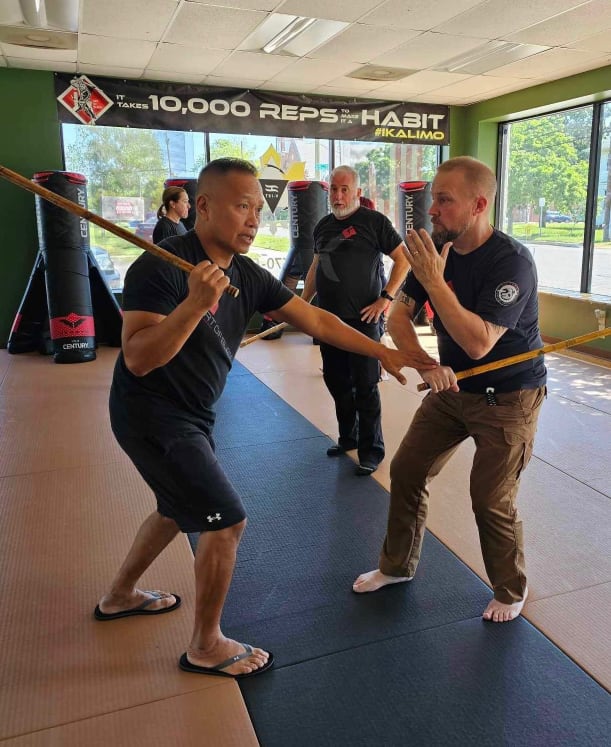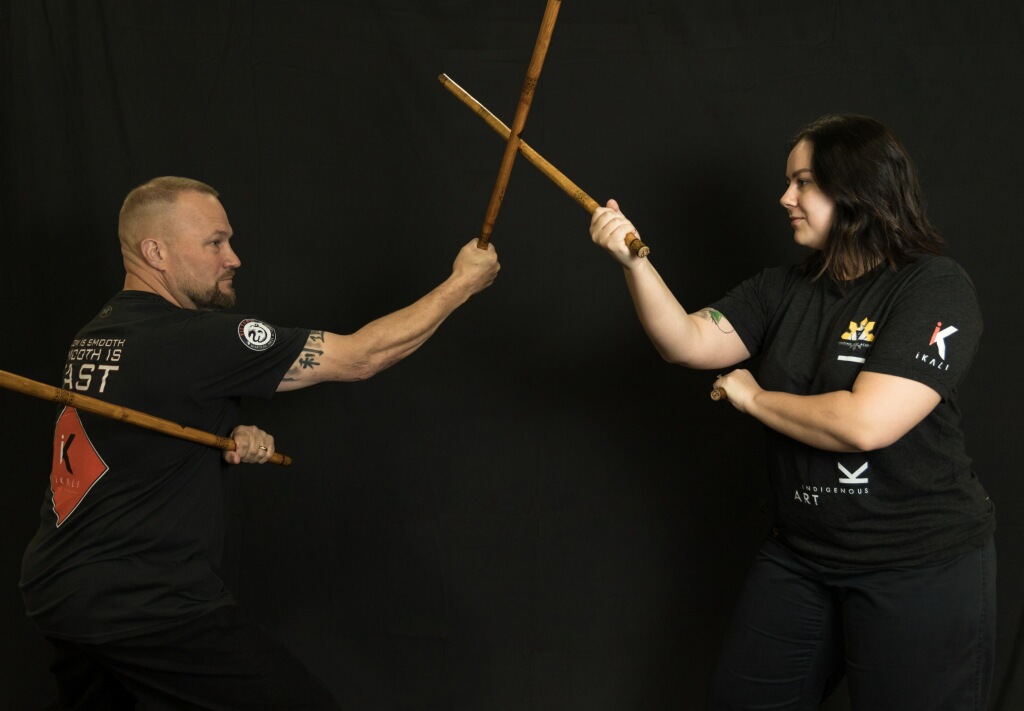What is Kali?

Kali is a complete system for self-protection. The main characteristic of Kali is the use of one or two arm-long sticks, swords, and knives for practice and combat. The strategies and tactics within Kali are developed in motion, and its mechanics are structured according to the characteristics of the weaponry employed - whether it be edged, blunt, or empty-hand. Combined with the principles of human anatomy, physiology, and kinesiology, this focus on flow and movement create the foundation and basis for tactical manipulation and application.
iKali, founded by Tuhon Apolo Ladra, is an indigenous fighting art in its truest form, a systematic art of combat fighting based on the science of strategic and tactical applications of counter-offensive techniques as defense. Its methodology of “Learn to Teach, Teach to Learn” speaks of its core process of "Know, Understand and Apply" in order to "flow".
One of Tuhon's top students and instructors, Lakan Guru Phil Penticost has been instructed to 'Share the Art'. His mission is to expose as many people to this complete art within as many as possible.
Pekiti Tirsia Kali

Pekiti is translated as “face to face,” and Tirsia means “to drive into a corner and cut up.” In other words, Pekiti describes the manner of using distance in fights to one's advantage to get closer to the opponent and end the confrontation. Tirsia describes the offensive nature of the system. It is based on the strategic principle of controlling the opponent through tactical movements and impact. Furthermore, Tirsia symbolizes the triangle, which builds the foundation for movements, body structure, and striking mechanisms.
Kali describes old Philippine fighting methods. The term expresses the orientation towards blades — in other words, that all hand and body movements are geared towards using a blade. Originally, knowledge of the combat systems of Kali was kept a secret. It was only imparted within the family to protect themselves and others from oppressors. KA and LI are sounds rooted in indigenous Philippine languages and writing systems, and are written in Baybayin as "Ka Li."
How is it Different?
The distinguishing characteristics of Kali and of the Filipino martial arts is the principle that weaponry is instructed firsts and then progresses into the final stages to empty-hands skills. The strategic reasoning behind this structure is that:
The nature of warfare is the utilization of weaponry - not empty hands.
Attribute development - the use of weaponry, and bladed weapons in particular, develops and enhances combative attributes and application at a more intensive level and faster rate than empty-hands training.
The Filipino methods of empty-hand combat are derived directly from the application of weaponry, versus having completely different styles of empty-hands skills and weaponry techniques. This principle of parallel methodology and transferable technology in its truest form can only be found within Filipino martial arts. In the modern application, these methods and skills transfer from bladed, blunt, and other weapons to empty-hands combat and directly back to modern weapons such as firearms.
‘The Blade is the great equalizer'.